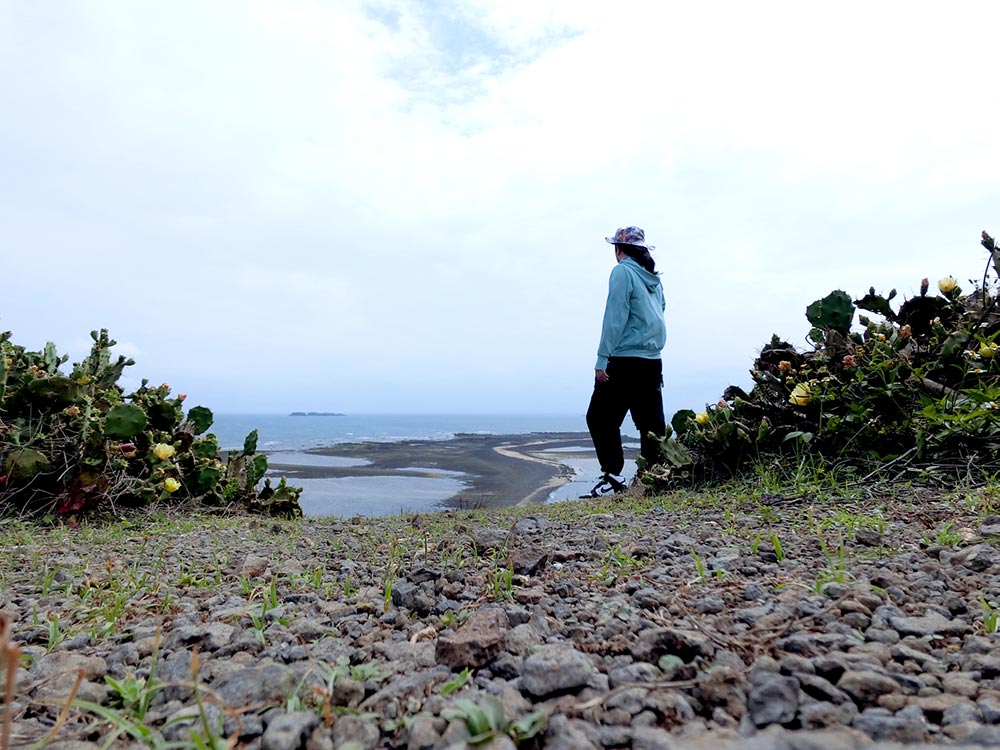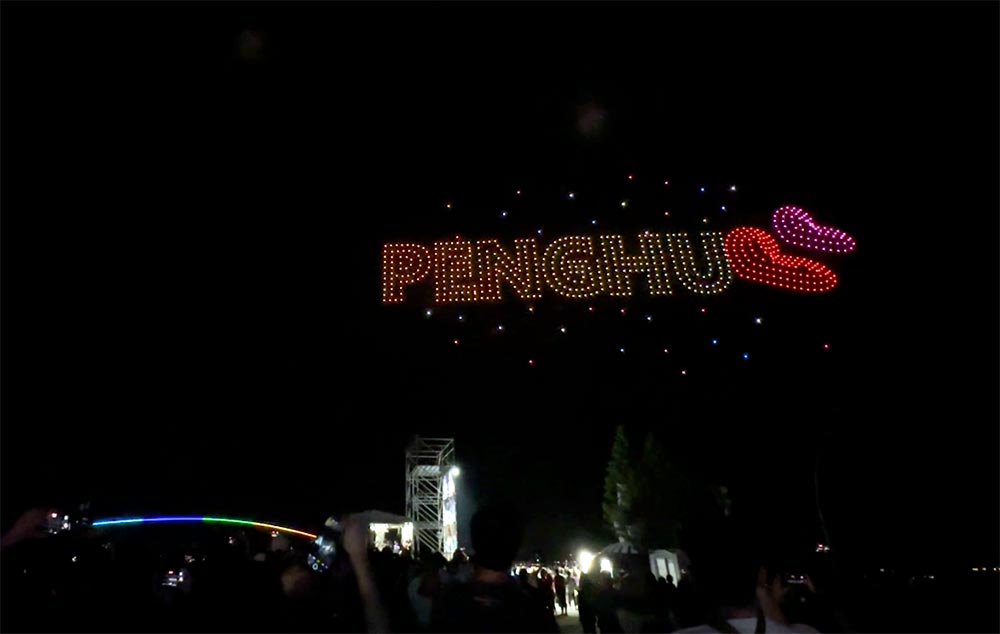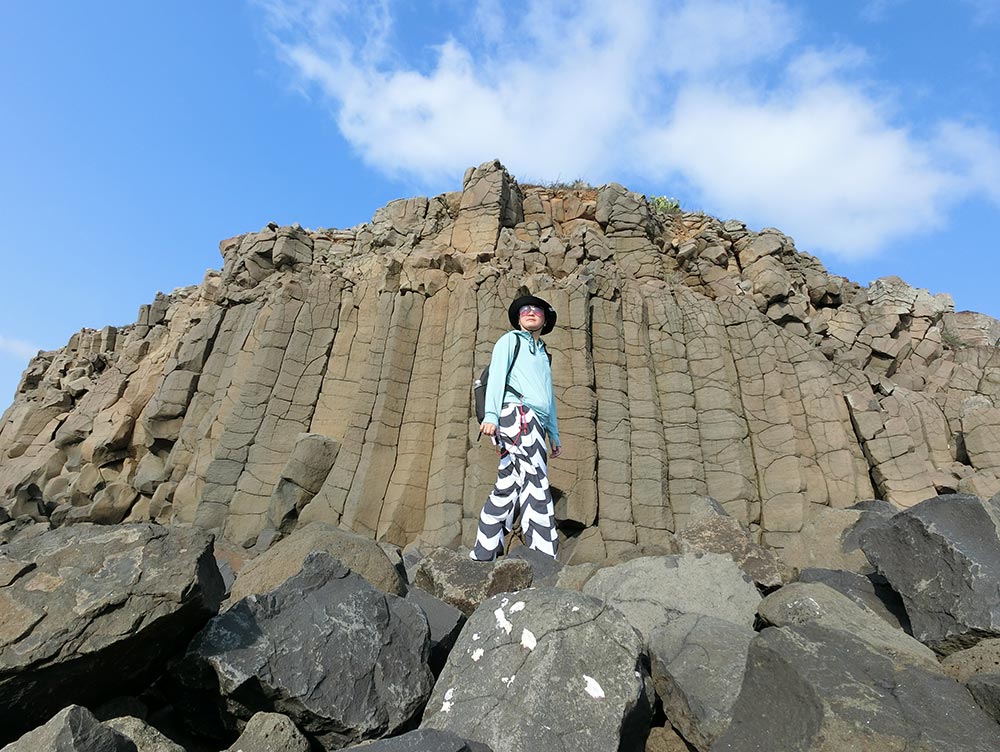Penghu is the largest of Taiwan‘s offshore islands consisting over 90 smaller islands. Located off the western coast of Taiwan, Penghu is famous for its fireworks festival in summer, historic fishing culture and some impressive natural geology.
Locals love to visit Penghu 澎湖 for a quick getaway and the popular sights can get pretty crowded. I spent a few days exploring the main islands and found some Penghu hidden gems – spots where you can still experience what Penghu is famous for but away from the crowds.
Check out my 3-day Penghu itinerary post for a deeper look at things to do in Penghu, or this logistics guide to help you plan your own trip to Penghu.
Penghu’s Top 10 Sights
According to the Penghu Tourism Website, Penghu’s top 10 sites are:
- Qimei Twin Heart Stone Weir
- Daguoye Basalt Stone Columnar
- Fongguei Cave
- Kuibishan (Moses Parts the Sea)
- Jibei Island
- Yuwengdao Lighthouse
- Erkan Historical Village
- Lintou Park
- Penghu Great Bridge
- Aimen Beach
I saw most of these places in my five days exploring Penghu (I missed out on Jibei Island and Lintou Park) and while these are all pretty sights, I thought I’d recommend some alternatives to these popular sights that you can add to your Penghu itinerary.
This article is sponsored by Income Insurance. I worked with Income Insurance to uncover hidden gems on my travels in 2023! Stay tuned for more blogs on cool places that I’ve visited around the world and always make sure you’re covered by Income’s Travel Insurance to travel with confidence. Enjoy 2x more COVID-19 coverage for overseas transport and accommodation expenses^ with Income’s Travel Insurance!
Learn more about Income’s Travel Insurance and check out the latest travel insurance promotions here.
^Policy and promo Ts&Cs apply. Protected up to specified limits by SDIC.
Here’s a video version if you’re too lazy to read, but I’ve added in some other spots in this article that can’t be found in the video so keep scrolling for more!
MUST SEE
Qimei Twin Heart Stone Weir 七美雙心石滬
Fishing was the main way of life for most of Penghu’s residents for a long time, and one of the unique fishing methods they developed were the use of stone weirs – fish traps in the intertidal area where fish can easily enter at high tide and the bottleneck entrance stops them from escaping at low tide. The weirs are also linked to the shore so it’s easy for the fishermen to harvest their catch.

Of all the stone weirs left in Penghu today, the stone weir on Qimei Island is by far the most famous not just for its romantic twin heart shape, but also because it’s one of the best preserved stone weirs left in Penghu.
While it’s become a symbol of Penghu, this stone weir actually takes some effort to see. Located on Qimei Island, it requires a boat ride of about two hours from the main Magong port, and another 10-minute bus/scooter ride from the port area. Also, you can only see this iconic stone weir from afar.
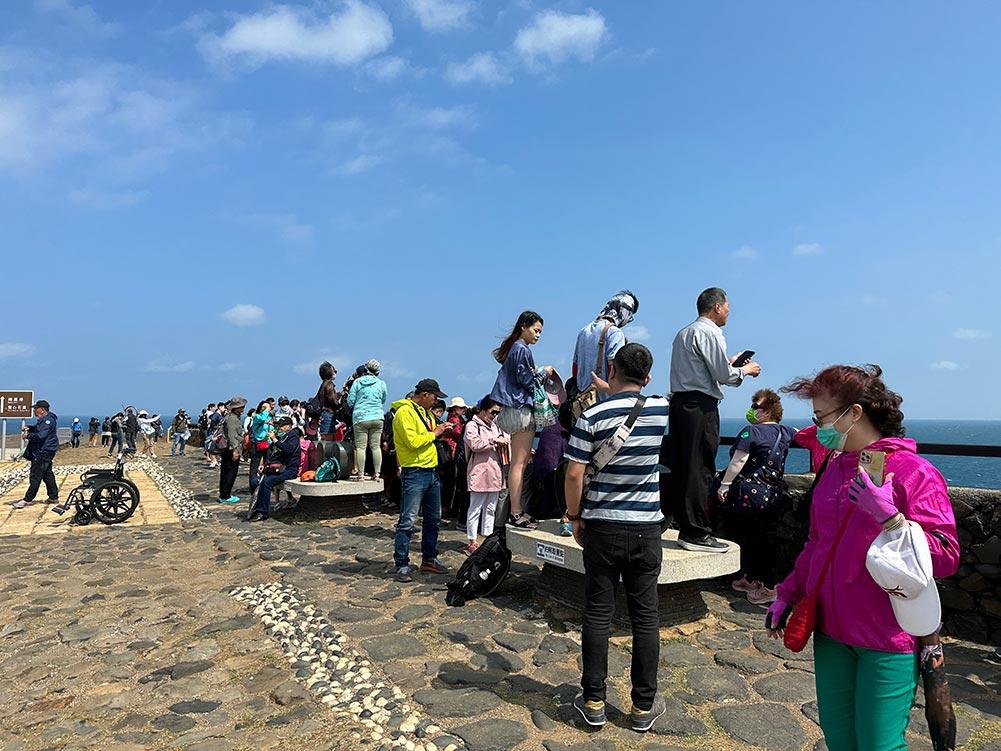
How to get there: there are many boat tours that go to Qimei Island from Magong Ferry Terminal. Typically the tours include scooter rental for self exploration on the island or you can ride the bus that is provided by the boat tour to see the sights. [Google maps location]
HIDDEN GEM
Chixi Tiger Eye Stone Weir 池西虎目石滬
If you want to see a stone weir up close, head over to Xiyu Island where there is a less well-known stone weir known as the Chixi Tiger Eye. Built in 1947, this is Chixi’s only remaining stone weir, and it has the typical single heart shape. Unlike the Qimei stone weir, you can actually walk out along the stone connector at low tide for a closer look.
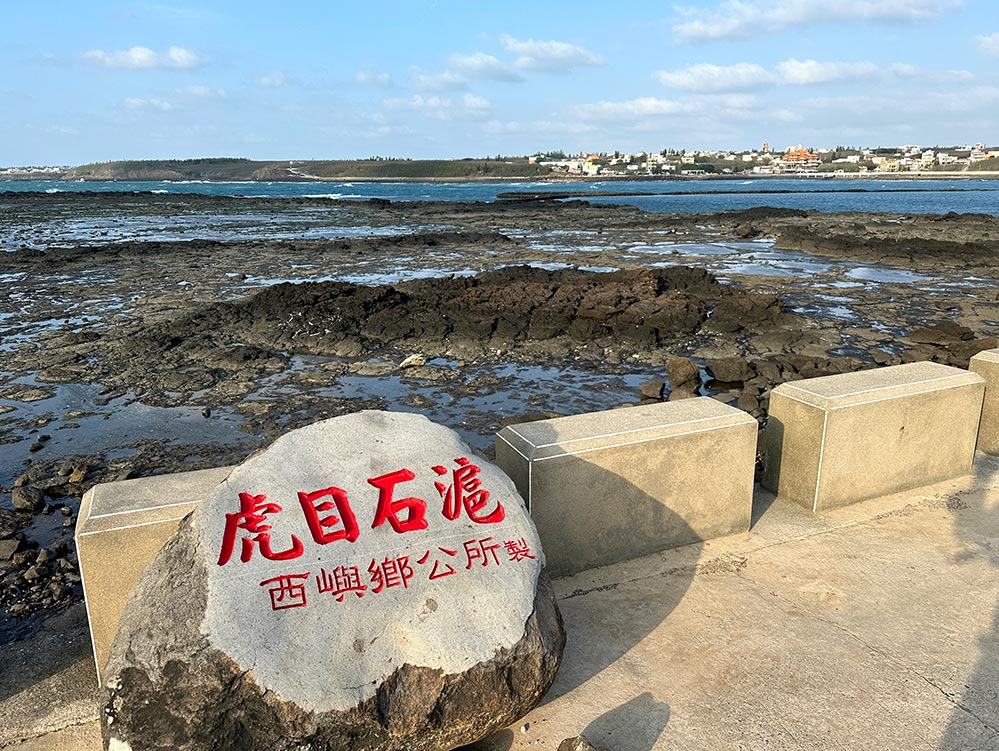
In addition, this part of Chixi is very quiet and scenic. The rocky intertidal area is great for nature lovers wanting a closer look at intertidal sea critters. I managed to visit at low tide, but it was very windy and the waves were very strong that day so I decided not to walk out on the walls.
Here’s what it looks like from the air!
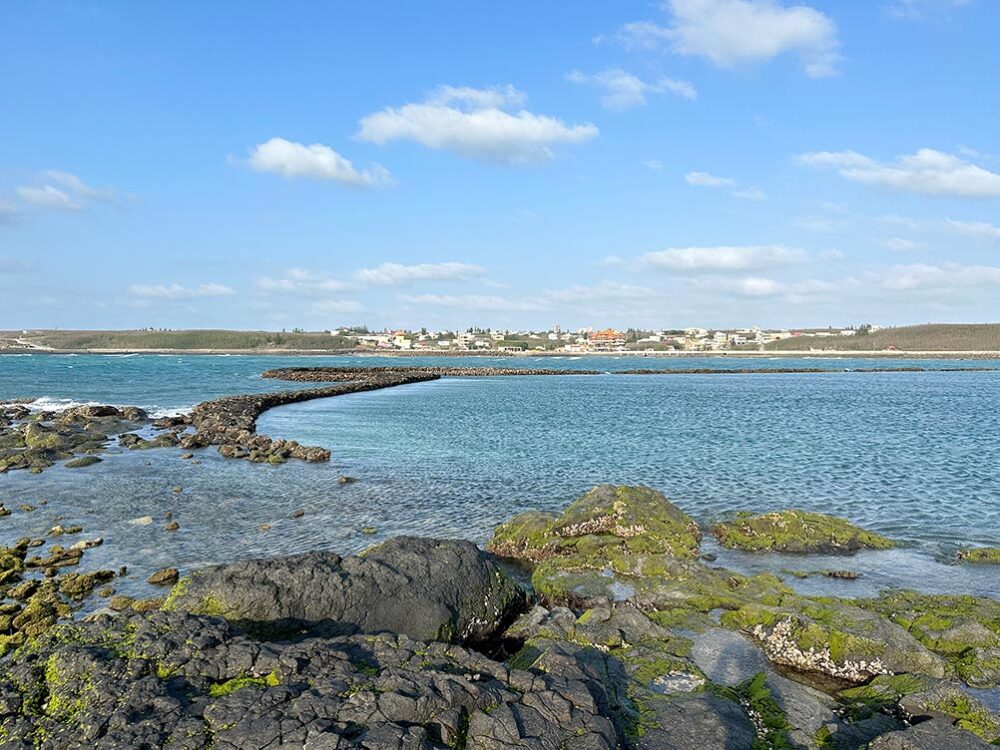
How to get there: Chixi is located on the west coast of Xiyu Island, which is connected by land to the main Penghu Island and about 40 minutes by scooter/driving from Magong Harbour. It’s on the other side of the bay where Chixi Rock Waterfall is located. [Google maps location]
MUST SEE
Daguoye Basalt Columnar 大菓葉柱狀玄武岩
Almost all the islands in Penghu are made of basalt rock and are the result of volcanic lava activity. The erupted lava cooled and over the years, weathered into unusual hexagonal column walls and these natural basalt rock features are now one of the natural sights to see in Penghu.
Xiyu Island has several popular spots where you can see these basalt columns. To the east, Daguoye 大菓葉 is very popular for its long stretch of wall, the small pond in front of it reflecting the rocks and the beautiful sea view nearby.
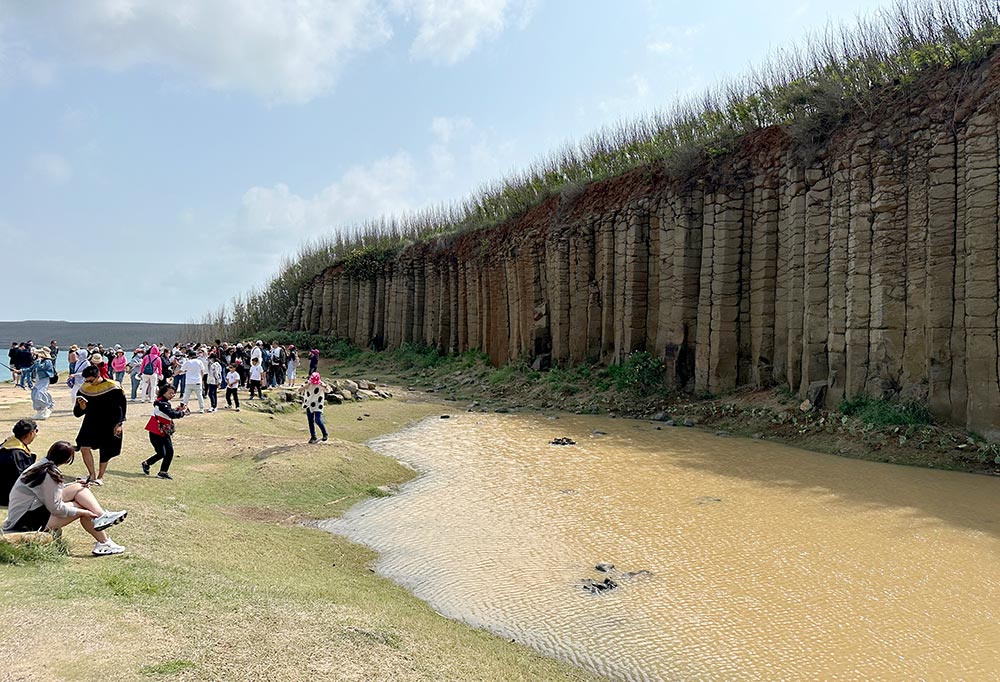
On the west side, Chixi Rock Waterfall 池西岩瀑 is very popular with Instagrammers as it’s right by the sea and there are some old rock ponds where you can wade in.
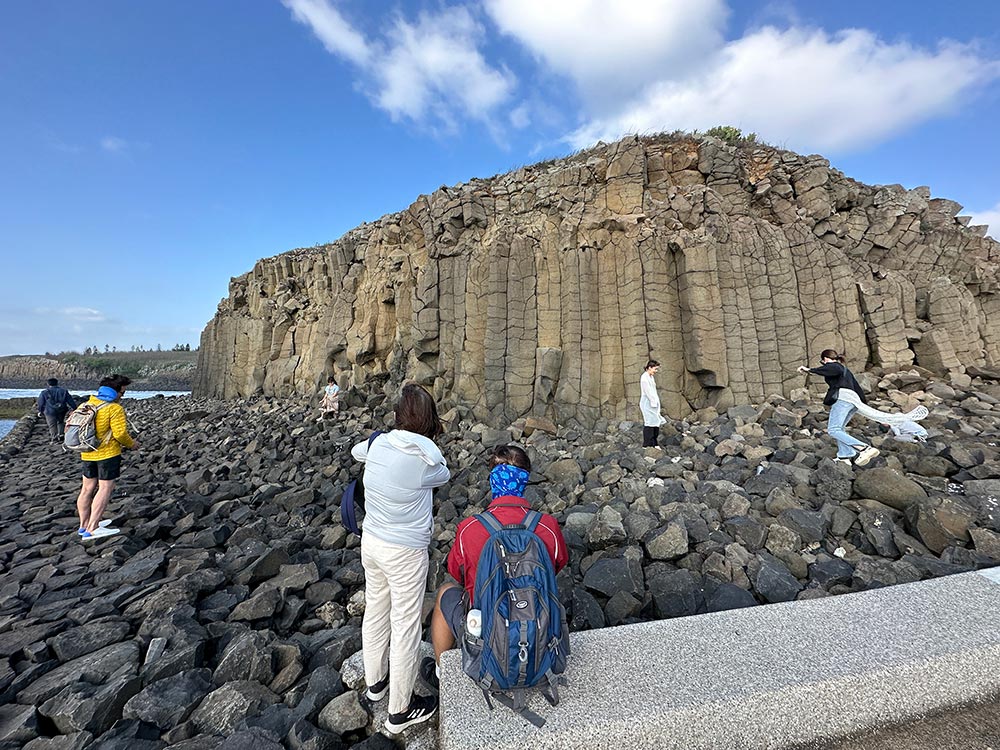
Because these rocks are fairly easy to access, these spots tend to be very crowded so getting a decent picture can be challenging.
How to get there: Daguoye and Chixi Rock Waterfall are both located on Xiyu Island, a 40 minute drive west from Magong Harbour. [Daguoye on Google maps] [Chixi Rock Waterfall on Google Maps]
HIDDEN GEM
Sanshibi 三石壁
Sanshibi is a well-hidden spot to see the basalt rock columns up close. Unlike the other two spots, this one is situated a bit more inland – there is a lake which is lined by walls of these hexagonal columns and reminds me of a quarry lake.
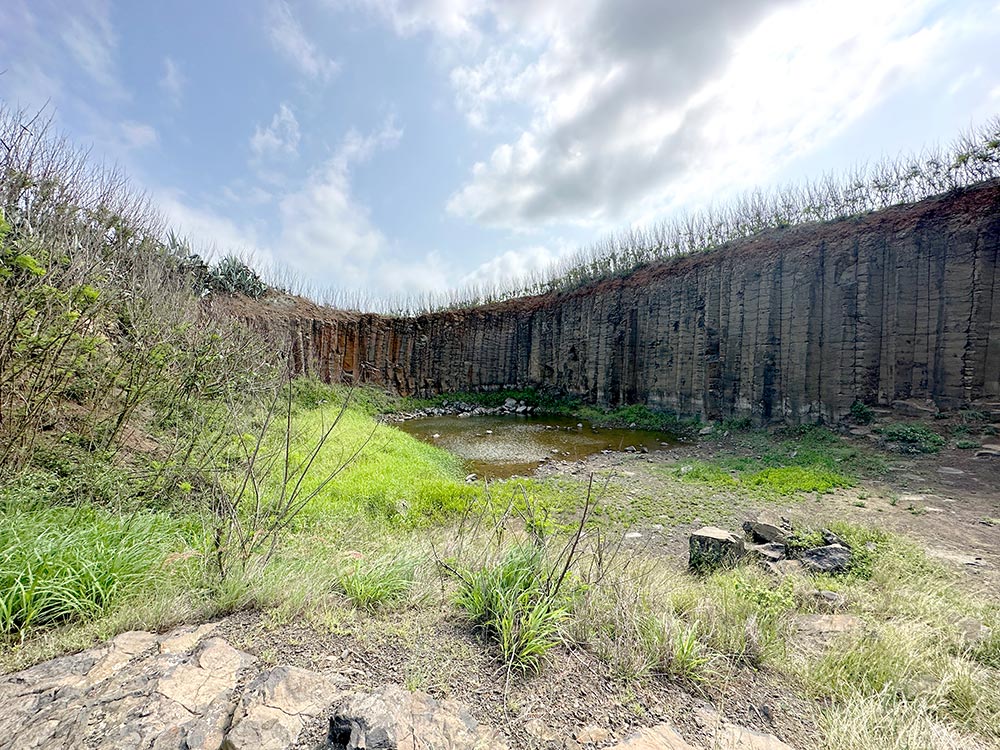
A little further in is another clearing with a smaller pond and more rocks, but there was only one other couple here when I visited so I had the space mostly to myself and lots of time to admire the rocks up close.
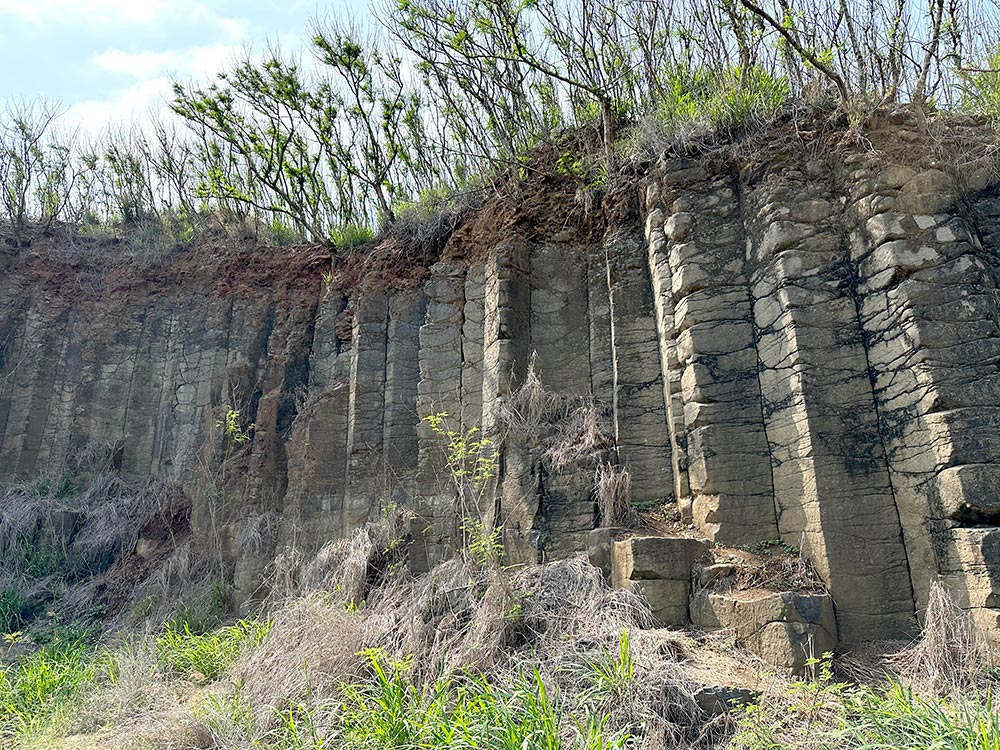
How to get there: Sanshibi is actually a very short distance away from Daguoye, pretty much just around the corner. There are no physical signs marking this place but you can follow the route on Google Maps and look for the stone path leading to it. [Google maps location]
MUST SEE
Moses Parts the Sea 摩西分海
One of the highlights on Penghu’s Huxi is called Mo Xi Fen Hai 摩西分海 or Moses Parts the Sea. There is an island off the shore called Chiyu 赤嶼 and at low tide twice a day, a stone path reveals itself for about 1-2 hours and allows you to walk directly across the sea to the island.
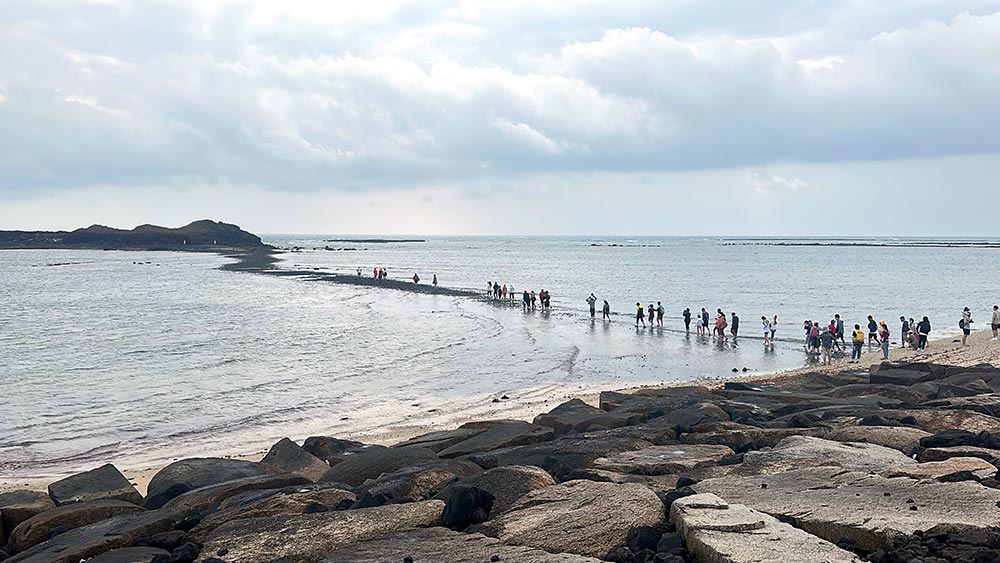
This is one of THE things that people come to Penghu specially to see so it will be crowded. Check the tide timetable before you go as the times are different every day – I suggest going about 30-45 minutes before the low tide so you can see the sea level drop and the path reveals itself. The beach is usually blocked, but when the tide is low enough, staff will open the gates and let people go down to the beach and walk across the island.
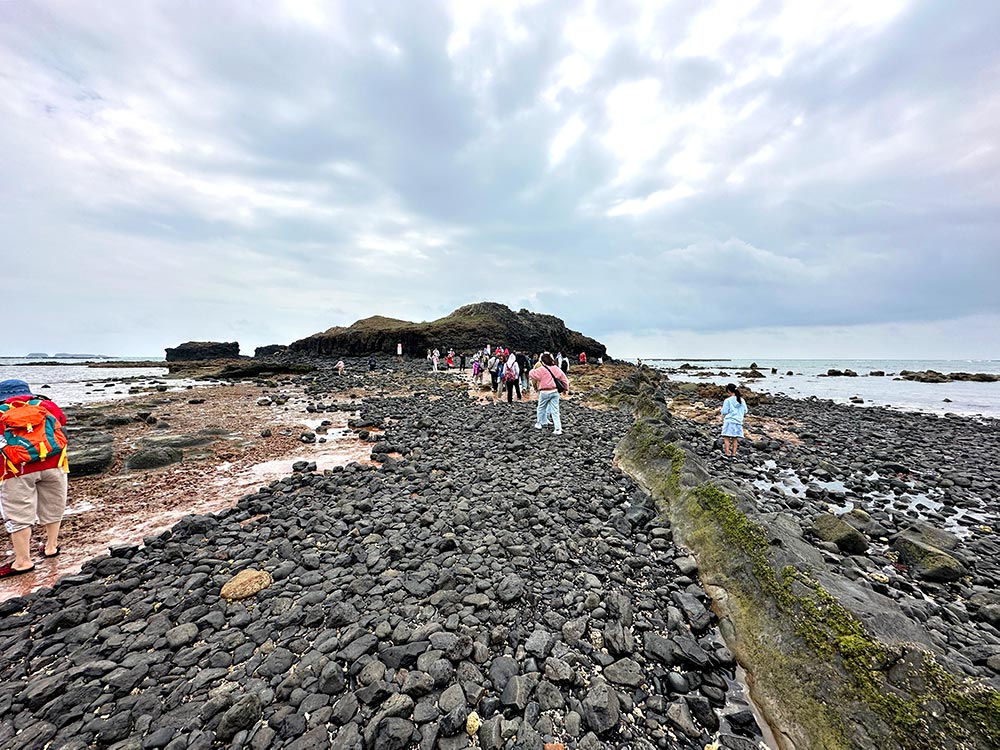
Chiyu is a tiny island and you’re not allowed to walk around it. You have about an hour before the staff will gently shoo you back to shore and close the gates until the next low tide. The tides really move quite quickly, and quite soon after that there will be no sign of the path again, but it’s a pretty cool thing to see for yourself.
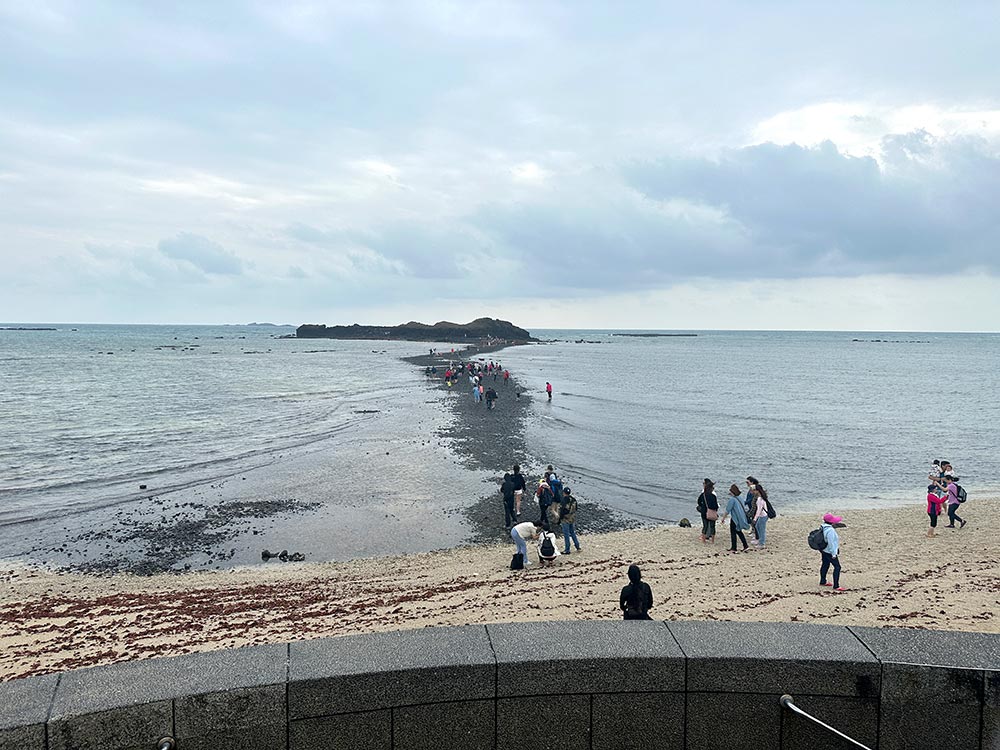
How to get there: Kuibishan is located in the northeastern corner of Huxi Island, about a 25 minute drive from Magong Harbour [Google maps location]
HIDDEN GEM
Kuibishan Trail 奎壁山步道
To the left of Moses Parts the Sea is a small hill that you can climb – this is Kuibishan 奎壁山. A small path up the hill takes you to a first viewpoint at some sort of control station where you can see Mo Xi Fen Hai from up high. You can get a nice full shot of the stone path connecting the beach to Chiyu from the side.
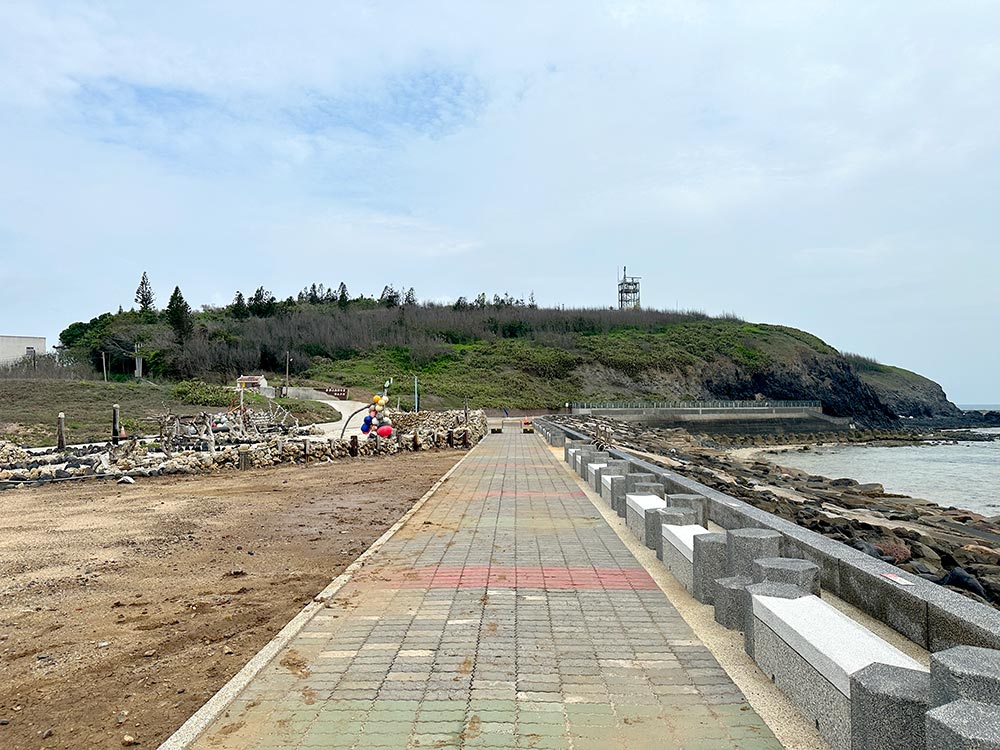
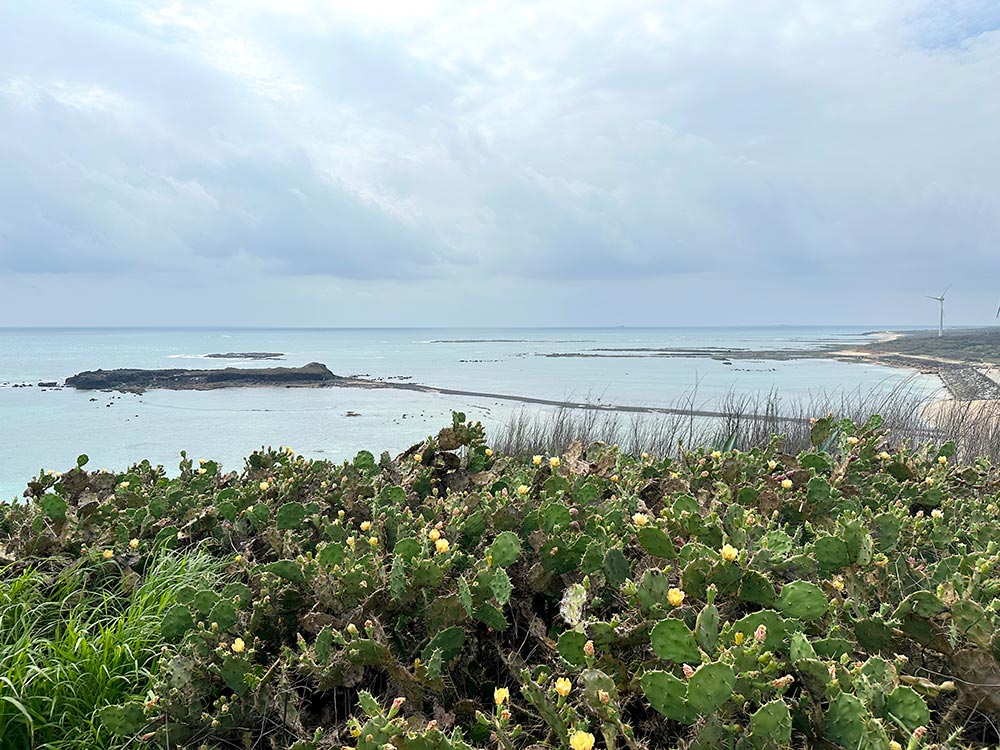
If you keep walking along the trail, you will find a second viewpoint that reveals another island that is also only seen at low tide that even fewer people know about – this is Fanshawei 番沙尾. You can walk to it from the beach if you really want to at low tide, but it’s quite remote and slippery so take extra care to check the tide times and terrain if you do

This walk is not difficult to do and much fewer people come up her – most just stick around the beach area.
How to get there: Kuibishan Trail is located on the hill to the left of Chiyu Island when you face it. [Google maps location]
MUST SEE
Erkan Historical Village 二崁傳統聚落保存區
Erkan Village 二崁聚落 on Xiyu Island is one of Penghu’s best preserved villages with houses dating back more than a century. The interesting thing about this village is that it was started by a man named Chen Yanyi who came from Kinmen, but because of the remoteness of this village, it never really expanded beyond his extended family members, so every member of this village has the same surname ‘Chen’.
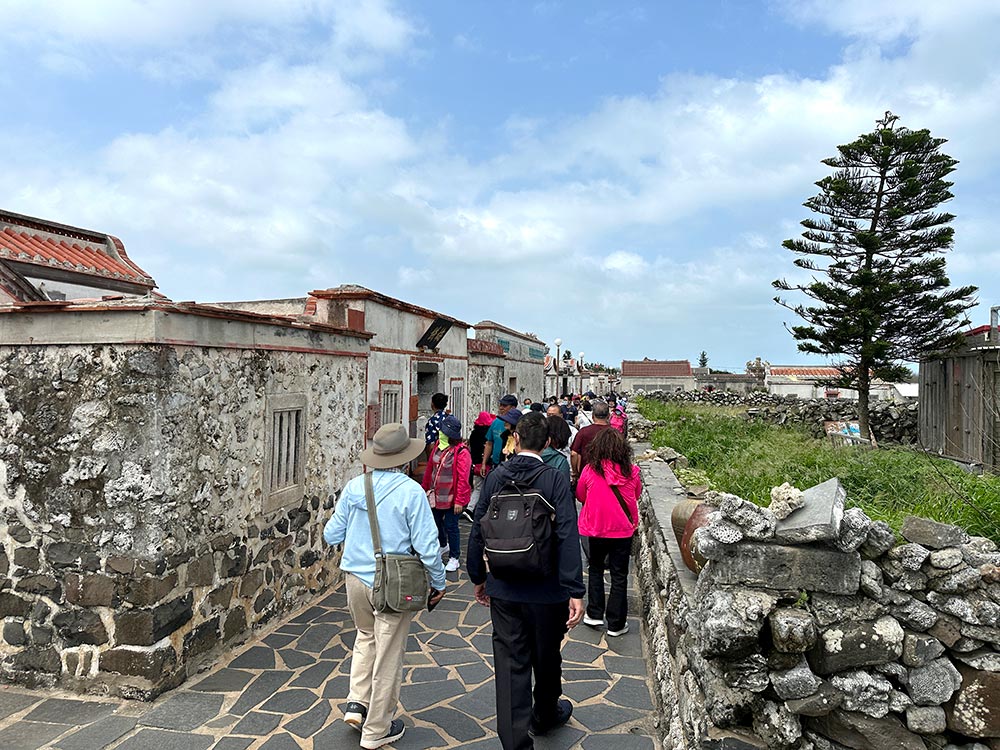
Timing definitely matters when you visit because the narrow lanes can be hard to navigate when the tour buses come along! The houses here are Southern Chinese Fujian style – if you look closely at the walls around the houses, you’ll see that instead of brick many of them utilised coral instead which is a Penghu tradition because that is the only natural resource found in abundance on the islands.
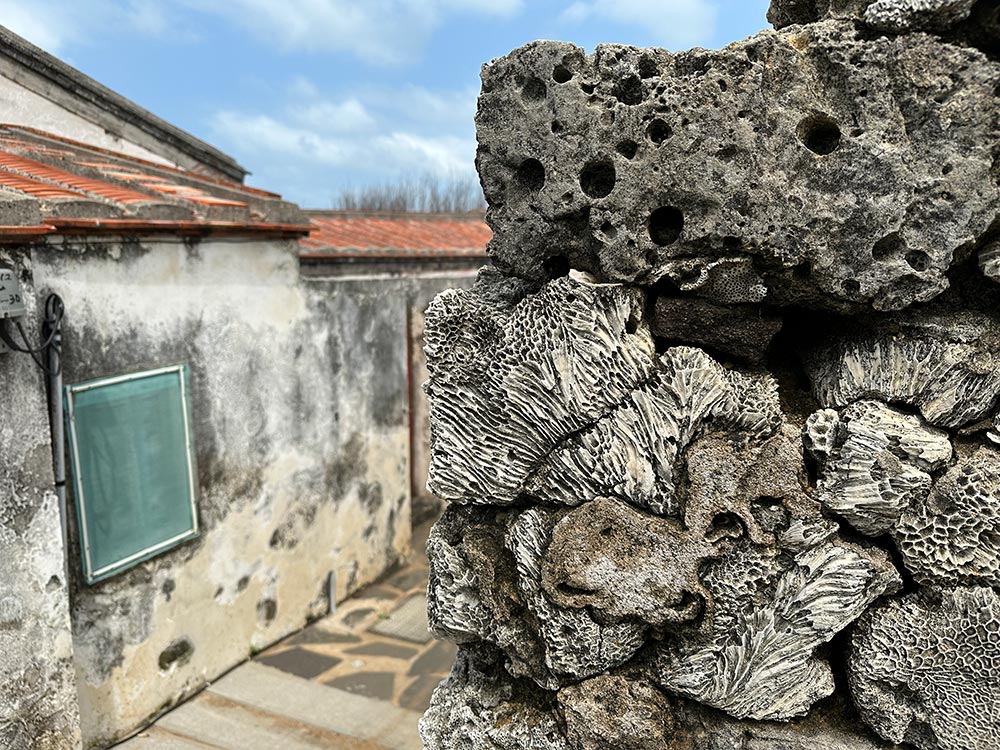
Besides checking out the ancient architecture – the Chen Family Ancient House dates back to 1910, there are a handful of shops to get some snacks at as well in this quaint little village.
How to get there: Erkan Historic Village is located in the middle of Xiyu Island, about 40 minutes drive from Magong Harbour. [Google maps location]
HIDDEN GEM
Nanliao Village 南寮村
Nanliao Village was a bit of an unexpected find for me. I spotted some colourful murals as I headed towards Kuibishan in the morning so I decided to check things out on my way back. It happened to be close to lunchtime so it was the perfect time for a break.

Because of its inland position away from the sea, Nanliao Village was not popular with the fishermen, and unfortunately its agriculture didn’t do so well either so it lost a lot of people over time. While the architecture here overall isn’t as old as Erkan’s, it does have an ancient house from the mid 1800s called the Xujia Old Residence, and another one completely overtaken by a giant banyan tree.

And they’ve made some interesting art installations from used and abandoned fishing buoys around the village for the snap-happy folk so it’s worth popping in for a bit.

How to get there: Nanliao Village is on Huxi Island, about 20 minutes away from Magong Harbour, along the way to get to Kuibishan and Moses Parts the Sea. [Google maps location]
MUST SEE
Fongguei Cave 風櫃洞
Fongguei 風櫃 is a pretty remote corner of the main Magong Island and apparently in this part of the island, the lava and basalt rock have eroded into caves and sea trenches along the coast, so at high tide, not only do you get some spectacular splashes, the wave crashing sounds are also supposed to be quite loud.

I think I might have gone there at the wrong time – you need it to be high tide for the wave action and everything was super calm when I was there so no splashing for me.


The other selling point is the mushroom-looking viewing tower which everybody is trying to snap a picture of. It’s pretty, but honestly hard to photograph without a friend. The weather was also pretty gloomy when I went, but this is apparently a great place for sunsets when it’s clear!
How to get there: Fongguei Cave is about 20 minutes drive away from Magong Harbour on the tip of the island. [Google maps location]
HIDDEN GEM
Whale Cave 鯨魚洞
As you cross the Great Bridge onto Xiyu Island, there is a turnoff towards the north to an island called Xiaomen 小門 or Shomon. If you’re looking for a cool geological rock formation by the sea, I think the Whale Cave at this geopark looks a lot more impressive than what you can find at Fongguei.
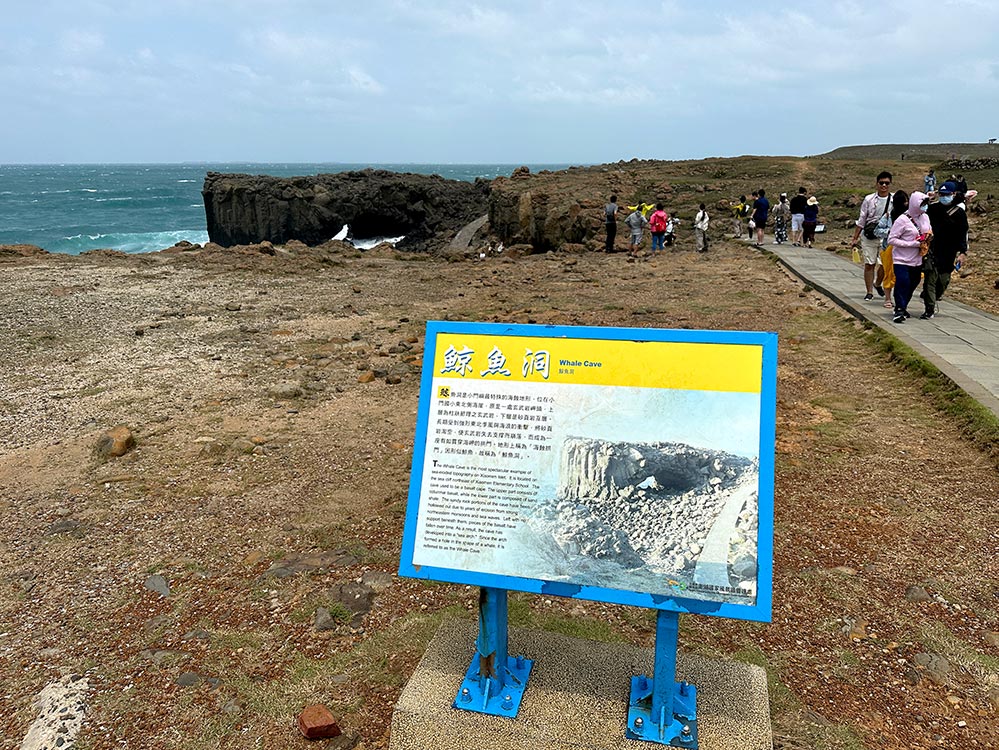
The Whale Cave 鯨魚洞 is not a cave, but an arch formed from the basalt rock and marine erosion. What I liked about this place is that while the main village area leading up to the whale cave can be a bit crowded because there are some eateries around there (squid vermicelli! yum~), if you take a stroll past the Whale Cave, it generally is a lot quieter and you can admire the coastline in peace.


How to get there: Xiaomen is about 35 minutes drive away from Magong Harbour in the northern end of Xiyu Island. Most of the island is actually restricted to traffic, so while it looks like you can drive right up to the Whale Cave on Google, you actually need to park around Xiaomen Beach and do a little walking [Google maps location]
Have you been to the Penghu Islands? Tell me about any hidden gem spots that you found! I hope to go back some day and explore Penghu’s other islands that I missed on this trip. Check out my other Penghu posts for more:
Penghu 3 day itinerary for solo travellers 澎湖
Penghu fireworks festival guide: My experience and what to expect 澎湖花火節
Taiwan Penghu Islands guide: How to get there, getting around and where to stay 澎湖
This article is sponsored by Income Insurance. Whether it’s hiking to a viewpoint or exploring hidden corners of an island, make sure you’re covered by travel insurance before your trip so you can have fun exploring adventurous hidden gems and travel with confidence. Enjoy 2x more COVID-19 coverage for overseas transport and accommodation expenses^ with Income’s Travel Insurance.
Learn more about Income’s Travel Insurance and check out the latest travel insurance promotions here.
Policy and promo Ts&Cs apply. Protected up to specified limits by SDIC.
^Based on comparison of benefit limits for an insured person under Income’s Travel Insurance Preferred Plan and Enhanced PreX Prestige Plan for trip cancellation and trip shortening against similar plans in Singapore.
All opinions expressed here are those of The Occasional Traveller and not of Income Insurance Limited (“Income”). The information provided here is for general information only and does not constitute an offer, recommendation, solicitation or advice to buy any insurance product(s). You should seek personalised financial advice before you purchase any insurance product. The Occasional Traveller is responsible for the accuracy and completeness of all information provided and intellectual property used in this article. Income is not responsible nor liable to any party for the content of this article and intellectual property used in this article. Buying insurance that is not suitable for you may impact your ability to finance your future insurance needs. Precise terms, conditions and exclusions of the insurance product are found here. The insurance product referred to in this article is underwritten and issued by Income.
This article may also contain hyperlinks to third party websites that are included for your convenience. Such linked websites are not under Income’s control and Income is not responsible for the contents of such linked websites or the consequences of accessing any link in any such websites. Income is also not responsible for any form of transmission received from any third party websites. The inclusion of any such link does not imply endorsement by Income of any such third party websites or any association with its owners or operators. You agree that any access to and/or use of such linked websites is at your own risk and any dealings with any such third parties included within this article, and any other terms and conditions associated with such transaction and promotion is solely between you and the third party. Income will not be liable or responsible for any part of such transactions and promotions.
Information is correct as at 14 Aug 2023.

